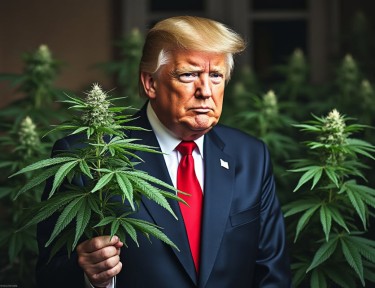Cannabis News
Your Million-Dollar Cannabis Business May Soon Be Worthless, And That Is Just the Beginning of the Bad News
Published
5 months agoon
By
admin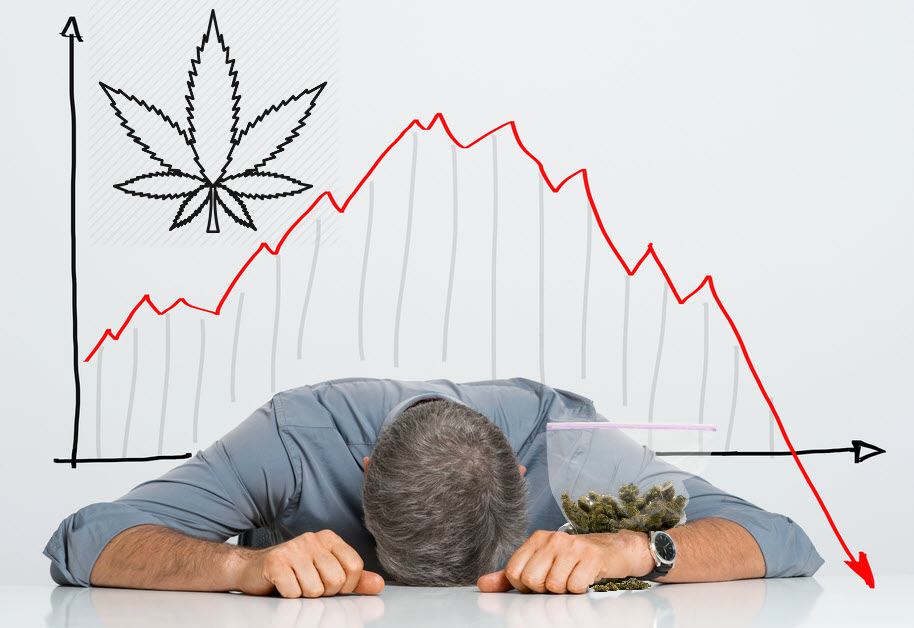
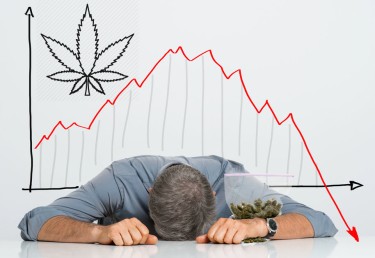
A great, and devasting article, by legendary journalist Deb Borchardt at Green Market Report, points out that cannabis retail locations in California are seeing a massive drop in valuations. If the weed revolution is the way to make riches, how are retail locations in the California going down in a value? As California goes, being an early pioneer is weed and having a population of almost the size of Canada, will other states soon see the same discount prices on cannabis businesses?
The worst news may not even be baked, no pun intended, into the equation yet, either! If full legalization is enacted, how would interstate commerence and the fact cannabis is no longer an illegal substance effect current models with high overhead and startup costs?
Could million-dollar cannabis dispensaries soon be worthless? Well, according to Green Life Business CEO Drew Mathews, the answer is yes. Mathews believes that the shift in the California market from valuing dispensaries based on top-line revenue to EBITDA (earnings before interest, taxes, depreciation, and amortization) and net income could lead to a significant decrease in dispensary valuations.
The Rise of the Cannabis Industry
The cannabis industry has grown exponentially since its legalization, with sales projected to reach $40 billion by 2025. Dispensaries, once small, niche businesses, have transformed into multimillion-dollar enterprises. However, this rapid growth has also led to increased competition, regulation, and scrutiny.
Changing Valuation Metrics
Historically, dispensaries were valued based on gross sales, often leading to inflated prices. As the market matures, investors are now prioritizing profitability. This shift means that dispensaries with high revenues but low net income may see their valuations plummet. For instance, dispensaries in California have experienced valuation drops of up to 75%, with some businesses that once sold for $2 million now listed at $500,000.
This has created a scenario where dispensaries that generate significant sales but operate at a loss are becoming increasingly undesirable in the marketplace.
-
Dispensaries are now being valued based on profitability rather than gross sales
-
Buyers are prioritizing a dispensary’s ability to generate profit over its revenue
-
Dispensaries with high sales but low profits are becoming less attractive to buyers
Implications for Dispensaries
1.Oversaturation of the Market:
The rapid growth of dispensaries has led to an oversaturated market, creating fierce competition that threatens profitability. Many entrepreneurs have entered the industry, drawn by the promise of lucrative returns, often without a clear understanding of market dynamics. As competition intensifies, dispensaries are compelled to differentiate themselves, frequently resorting to price wars and deep discounts to attract customers, which drives overall prices down and impacts their margins.To succeed in this challenging environment, dispensaries must adapt their strategies by focusing on unique value propositions, diversifying product offerings, and enhancing customer service. Effective cost management and operational optimization are essential for maintaining profitability amidst this fierce competition. Ultimately, while the oversaturation of the cannabis market presents significant challenges, it also offers opportunities for those willing to innovate and adapt.
2. High Taxation and Regulatory Costs:
Dispensaries in the cannabis industry face substantial taxation and regulatory fees that significantly impact their profitability and sustainability. Many states impose high excise taxes on cannabis sales, ranging from 10% to 37%. For example, California has a 15% excise tax, while Washington can reach 37% at the retail level. Local taxes can further compound this burden.
Additionally, dispensaries must navigate various regulatory fees, such as Canada’s 2.3% fee on cannabis companies, alongside the constraints of IRS Section 280E, which prevents cannabis businesses from deducting ordinary expenses. This combination of high taxes and regulatory costs can make operations unsustainable, with less than 25% of cannabis businesses achieving profitability. Ultimately, these financial pressures can drive consumers back to the black market, undermining the objectives of legalization.
3. Limited Access to Financing
Limited access to financing poses a significant challenge for cannabis dispensaries, hindering their growth and operational stability. Traditional financial institutions, including banks and credit unions, often remain reluctant to lend to cannabis businesses due to the federal illegality of marijuana in the United States. This reluctance restricts dispensaries’ ability to secure loans, lines of credit, and other essential funding sources, forcing many to rely on personal savings or high-interest private loans, which can exacerbate financial strain. Without adequate funding, dispensaries may struggle to invest in critical areas such as inventory, marketing, and technology, limiting their ability to compete effectively in a rapidly evolving market. This lack of investment can stifle growth and innovation, making it difficult for businesses to adapt to changing consumer preferences and regulatory requirements. As a result, many dispensaries face operational instability, which can lead to cash flow issues and, ultimately, jeopardize their long-term viability in the industry. The challenges surrounding access to financing not only impact individual businesses but also hinder the overall growth of the cannabis sector, preventing it from reaching its full potential.
4.Changing Consumer Preferences:
As the cannabis market matures, consumer demand is evolving, with a shift towards innovative products like edibles, beverages, and concentrates. Generational differences also influence preferences, with younger consumers favoring products that align with their lifestyle choices. Dispensaries must adapt their offerings to meet these changing needs, or risk losing market share to competitors.
The rise of health-conscious consumers has led to increased demand for organic and sustainably sourced products. Dispensaries that prioritize transparency and quality will be better positioned to succeed in the competitive cannabis market. Staying attuned to evolving consumer preferences is crucial for dispensaries to maintain profitability and long-term success.
The worst of the doom and gloom may still be coming as well. If cannabis is moved to a schedule 3 drug or legalized outright, there will be reguations in place for interstate commerece at some point. When consumers have access to an efficient market, say buying buying products online, pricing shopping, and having them shipped to their door, it tends to lower margins and decrease prices for the whole industry. That is not yet baked into the equation as millions of dollars are being poured into states like Florida and Michigan.
If marijuana is legalized by a new Trump or Harris administration it may not even need a license to grow or sell. A completely legal product would mean that at worst you would need a state-license inorder to sell and ship cannabis across a state line or in the mail. UPS and the USPS would not have any reason to stop shipments of completely legal products. That means any website or app with traffic could become an online dispensary or store. Would Shopify protest if weed is 100% legal? Would they have any legal grounds to stop large retailers already on their platform from adding a “Cannabis/Wellness” section of products?
While Deb’s article points out that buyers come in at a bottom and some people will think this is a bottom in valuations, there are many reasons and unknowns out there that could be aruged that we are not even close to a bottom in the cannabis industry on prices or margins.
Opportunities Amidst Challenges
Despite these challenges, the evolving market landscape presents several opportunities:
Decreased valuations can attract new investors looking to enter the market at lower prices. As million-dollar dispensaries become less valuable, savvy investors can acquire businesses more affordably, injecting capital that fuels growth and innovation.
A focus on profitability encourages dispensaries to adopt sustainable business practices. By optimizing operations and reducing costs, they can build more stable companies that are better equipped to handle market fluctuations, ultimately leading to long-term success.
The need for efficiency may drive innovation, prompting dispensaries to explore new business models, such as subscription services or loyalty programs. Additionally, stronger dispensaries may acquire weaker competitors, resulting in a more robust industry with fewer but more profitable businesses.
As dispensaries demonstrate consistent profitability, they may attract institutional investors and venture capitalists, further fueling growth and innovation. In summary, while challenges exist, the shift towards profitability in the cannabis industry offers significant opportunities for those willing to adapt and innovate.
Conclusion
The cannabis industry’s shift towards valuing dispensaries based on profitability rather than sales marks a critical juncture. While this change may render many million-dollar dispensaries worthless, it also opens the door for sustainable growth, innovation, and new market entrants. Dispensaries must adapt to these evolving dynamics to thrive in the increasingly competitive landscape.
READ THE GMR REPORT AND DEB’S ARTICLE, CLICK BELOW…
You may like
-


The Best Marijuana Strains For Your Chinese Zodiac Sign
-


Cannabis Can Get Rid Of The Doomsday Clock Blues
-


Will Snoop Dogg Use His New Influence To Help Cannabis
-


Not Just Alcohol Sales Dropping, Anxiety Medication Prescriptions Plummet in States with Legal Cannabis Programs
-


Why 2025 could be a banner year for cannabis investors
-


Alaska Law Enforcement significantly increases illegal drug seizures in 2024
Cannabis News
Not Just Alcohol Sales Dropping, Anxiety Medication Prescriptions Plummet in States with Legal Cannabis Programs
Published
16 hours agoon
January 28, 2025By
admin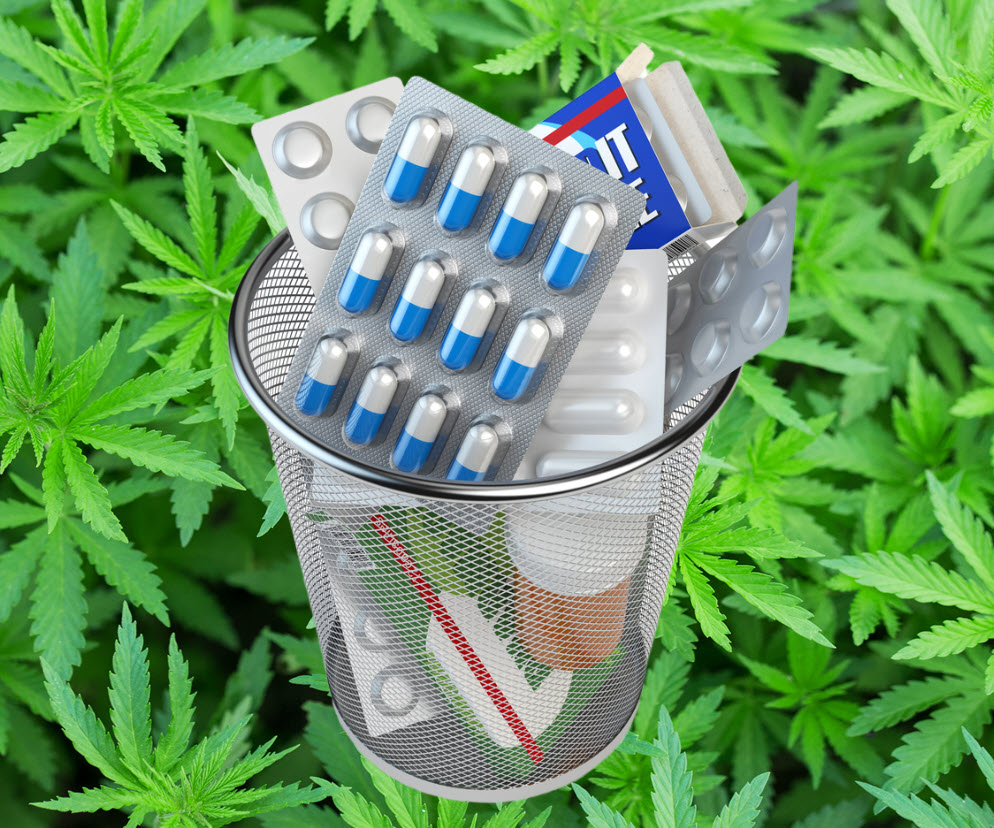

The legalization of marijuana has sparked a significant shift in the landscape of mental health treatment, particularly concerning anxiety disorders. Recent studies have indicated a notable decrease in prescriptions for anti-anxiety medications, especially benzodiazepines, in states where marijuana has been legalized. This phenomenon raises important questions about the implications for pharmaceutical companies that have long dominated the market for anxiety treatments. In this article, we will explore the connection between legal marijuana and the decline in anxiety medication prescriptions, delve into the broader implications for the pharmaceutical industry, and consider what this means for patients and healthcare providers.
Understanding Anxiety Disorders and Current Treatment Options
The Prevalence of Anxiety Disorders
Anxiety disorders are among the most common mental health issues affecting millions of individuals worldwide. According to the World Health Organization (WHO), anxiety disorders affect approximately 264 million people globally. These disorders encompass a range of conditions, including generalized anxiety disorder (GAD), social anxiety disorder, panic disorder, and specific phobias. Symptoms can vary widely but often include excessive worry, restlessness, fatigue, difficulty concentrating, and physical symptoms such as increased heart rate and sweating.
Traditional Treatments for Anxiety
Historically, treatment options for anxiety disorders have included psychotherapy and pharmacotherapy. Common pharmacological treatments include:
-
Benzodiazepines: Medications such as diazepam (Valium), lorazepam (Ativan), and alprazolam (Xanax) are frequently prescribed for short-term relief of acute anxiety symptoms. While effective, these medications carry risks of dependency and withdrawal symptoms.
-
Selective Serotonin Reuptake Inhibitors (SSRIs): Drugs like sertraline (Zoloft) and fluoxetine (Prozac) are often used as first-line treatments for chronic anxiety disorders. They work by increasing serotonin levels in the brain but can take several weeks to show effects.
-
Cognitive Behavioral Therapy (CBT): This form of psychotherapy is widely regarded as an effective treatment for anxiety disorders. CBT focuses on changing negative thought patterns and behaviors associated with anxiety.
Despite their effectiveness, many patients experience side effects from these medications or find them insufficient in managing their symptoms. As a result, there is growing interest in alternative treatments, including legal marijuana.
The Rise of Legal Marijuana
In recent years, various states in the U.S. have moved toward legalizing marijuana for both medical and recreational use. As of 2023, over 30 states have legalized medical marijuana, while several others have legalized it for recreational use. This trend reflects changing public attitudes toward cannabis and increasing recognition of its potential therapeutic benefits.
Medical Marijuana and Anxiety Relief
Cannabis contains numerous compounds known as cannabinoids, with tetrahydrocannabinol (THC) and cannabidiol (CBD) being the most studied. THC is responsible for the psychoactive effects associated with marijuana use, while CBD is non-psychoactive and has garnered attention for its potential therapeutic properties.
Research suggests that CBD may help alleviate anxiety symptoms without the side effects commonly associated with traditional anti-anxiety medications. A 2019 study published in The Permanente Journal found that CBD significantly reduced anxiety scores in a group of patients within a month of treatment.
The Connection Between Legal Marijuana and Reduced Anxiety Medication Prescriptions
A groundbreaking study published in JAMA Network Open examined prescription data from states that legalized marijuana. The researchers found that states with medical cannabis laws experienced a 12.4% reduction in benzodiazepine prescriptions, while those with recreational laws saw a 15.2% decrease. This data suggests that patients may be substituting cannabis for traditional anti-anxiety medications.
Patient Behavior and Preferences
Several factors may contribute to patients’ decisions to turn to legal marijuana instead of pharmaceuticals:
1. Perceived Safety: Many individuals view cannabis as a safer alternative to benzodiazepines due to the latter’s association with dependency and withdrawal issues.
2. Efficacy: Patients often report positive experiences with cannabis in managing their anxiety symptoms, leading them to prefer it over conventional medications.
3. Holistic Approach: Cannabis is often perceived as part of a more holistic approach to health that includes lifestyle changes, mindfulness practices, and alternative therapies.
4. Accessibility: In states where cannabis is legal, obtaining it may be easier than navigating the healthcare system to secure prescriptions for traditional medications.
Implications for Pharmaceutical Companies
The decline in benzodiazepine prescriptions linked to legal marijuana poses significant challenges for pharmaceutical companies that produce these medications. Here are some key implications:
Market Dynamics
As more patients seek cannabis as an alternative treatment for anxiety, pharmaceutical companies may face reduced demand for their products. This shift could lead to decreased revenue from anti-anxiety medications, prompting companies to reevaluate their market strategies.
Research and Development Focus
Pharmaceutical companies may need to adapt by investing in research related to cannabis-based therapies or developing new products that incorporate cannabinoids. Some companies are already exploring synthetic cannabinoids or formulations that combine traditional pharmaceuticals with cannabis extracts.
Regulatory Challenges
The evolving legal landscape surrounding cannabis presents regulatory challenges for pharmaceutical companies. As more states legalize marijuana, there may be increased scrutiny regarding its safety and efficacy compared to traditional medications.
Broader Implications for Mental Health Treatment
The rise of legal marijuana as a treatment option signals a potential shift in how mental health care is approached:
1. Integration of Cannabis into Treatment Plans: Healthcare providers may begin incorporating cannabis into treatment plans alongside traditional therapies. This integration could lead to more individualized care tailored to patients’ preferences.
2. Increased Focus on Patient-Centered Care:The growing acceptance of cannabis reflects a broader trend toward patient-centered care models that prioritize patient preferences and experiences in treatment decisions.
3. Need for Education: As patients increasingly seek information about cannabis as a treatment option, healthcare providers must be equipped with knowledge about its benefits and risks to guide informed decision-making.
Potential Risks and Considerations
While legal marijuana offers promising alternatives for managing anxiety, it is essential to consider potential risks:
1. Lack of Regulation:The cannabis industry is less regulated than pharmaceuticals, leading to concerns about product quality, dosing accuracy, and potential contaminants.
2. Individual Variability: Responses to cannabis can vary widely among individuals due to factors such as genetics, tolerance levels, and underlying health conditions.
3. Potential for Misuse: While many individuals use cannabis responsibly, there is potential for misuse or over-reliance on it as a coping mechanism.
Conclusion
The link between legal marijuana and decreased prescriptions for anti-anxiety medications marks a significant development in mental health treatment paradigms. As more patients turn to cannabis as an alternative therapy, pharmaceutical companies must adapt to this changing landscape by reevaluating their strategies and investing in research related to cannabinoid-based treatments. For patients grappling with anxiety disorders, this shift could herald a new era of treatment options that prioritize safety, efficacy, and individual preferences. However, it also necessitates ongoing dialogue among healthcare providers about the best approaches to integrate cannabis into mental health care while ensuring patient safety.As we move forward into this evolving landscape of mental health treatment options, it is crucial to remain vigilant about the implications of these changes—both positive and negative—for patients seeking relief from anxiety disorders and the broader healthcare system at large.
—
This article provides an extensive overview of how the legalization of marijuana is linked to changes in medication prescriptions for anxiety disorders while discussing its implications on pharmaceutical companies and mental health treatment paradigms overall.
CANNABIS REPLACES BENZOS? READ ON…
Cannabis News
An Important Lesson from the 2024 Elections
Published
3 days agoon
January 26, 2025By
admin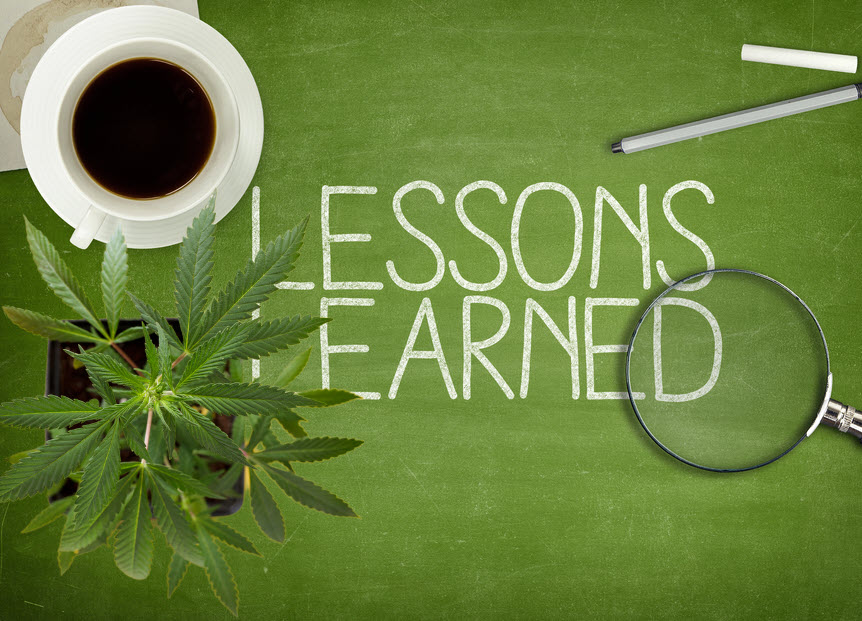

Retrospect: An Important Lesson to learn from the 2024 Elections
Well folks, here we are again. Donald Trump is back in the White House, and if his previous term taught us anything, we’re strapping in for one hell of a rollercoaster ride. I can already feel my inbox filling up with requests to write about the latest Trump cannabis controversy or whatever inflammatory tweet is setting the internet ablaze.
But I’ll be honest with you – I’m going to try my damnedest to avoid turning this platform into yet another Trump commentary channel. Lord knows we’ve got enough of those already. Between the mainstream media’s obsession with every presidential syllable and the circus surrounding Elon Musk and RFK Jr.’s alliance with Trump, we’re already drowning in political theater. I mean, just look at the current media frenzy over “Did Elon Nazi Salute?” after Trump’s inauguration speech. If that’s any indication, we’re in for four years of non-stop sensationalism.
Here’s the thing though – as someone who prides himself on staying above the partisan fray (and believe me, that’s getting harder by the day), I feel obligated to share some hard-earned wisdom about navigating the cannabis landscape during these politically charged times. The last four years under Biden’s administration taught us some valuable lessons about political promises and cannabis reform, and those insights are more relevant than ever as we enter this new chapter.
So grab your favorite strain, settle into your comfy spot, and let old Reginald share some perspective on what we’ve learned and how to keep our heads straight during what’s sure to be an… interesting four years ahead.
If there’s one thing I’ve learned from years of covering cannabis politics, it’s that weed polls better than politicians – and boy, do they know it. It might sound like I’m hitting the bong too hard, but the numbers don’t lie. Election after election, cannabis legalization consistently polls higher than any candidate running for office. With pseudo-legalization spreading across the country like wildfire, there are more cannabis supporters than ever before, making us quite the tempting voting bloc.
This reality wasn’t lost on the Democrats during their four-year stint. They dangled cannabis reform like a carrot on a stick, making grand promises about prioritizing legalization. Remember Kamala Harris, suddenly becoming cannabis’s biggest cheerleader? The same Kamala who oversaw countless marijuana prosecutions as California’s Attorney General was now preaching about social justice and legalization. The irony was thicker than smoke in a hotboxed Volkswagen.
For the first few years of the Biden administration, we got nothing but lip service. Then, as election season approached – wouldn’t you know it – suddenly cannabis reform became urgent. Pot pardons! Rescheduling! It was like watching a dealer who ghosted you for months suddenly sliding into your DMs with “you up?”
And some folks ate it up. I saw countless posts from well-meaning stoners declaring their undying loyalty to Biden-Harris based solely on these eleventh-hour cannabis promises. But let’s get real – those pardons didn’t free a single soul from prison, and the rescheduling circus? Well, that’s still stuck in bureaucratic limbo, likely to face years of litigation if it ever materializes.
Here’s the kicker though – despite all this pot pandering, Trump still won. Why? Because while cannabis reform is important, Americans were more concerned about putting food on their tables, feeling safe in their communities, and managing the immigration crisis. The Democrats were so busy virtue signaling about helping marginalized communities that they forgot about the broader population’s immediate concerns. That’s like focusing on growing exotic strains while your basic crops are dying – it might sound cool, but it won’t feed the masses.
The result? Not only did they lose the election, but they strung along millions of cannabis supporters for absolutely nothing. No legalization, no meaningful reform, just empty promises and disappointed voters. And therein lies our lesson, my friends. Politicians will always love pot pandering because they know we’re passionate about legalization. But when their promises go up in smoke, we’re the ones left holding an empty bag.
Here’s a draft in Reginald Reefer’s voice:
Let me tell you why I stay away from political parties like they’re contaminated bathwater. It’s not because I don’t care about society or our collective rights – quite the opposite. It’s because these parties are like ill-fitting suits; they might look good on the rack, but once you try them on, nothing quite sits right.
Take me, for example. On some issues, I’m as “Republican” as they come. I believe in keeping government small (because let’s face it, they tend to mess up everything they touch), rewarding merit over handouts, cutting through red tape, and protecting individual liberties. You know, the whole “leave me alone to grow my plants in peace” mentality.
But flip the coin, and suddenly I’m singing from the Democratic hymnal. I believe in drug reform (obviously), holding big corporations accountable for their shenanigans, protecting Mother Earth, and letting people love whoever they damn well please. Some might say this makes me a libertarian, but I prefer to think of myself as an anarchist – not in the “chaos in the streets” sense, but in the “I don’t need a master telling me what to do” sense.
Now, if I were to play the political game (which I’m not, but let’s pretend), here’s how I’d approach it. During campaign season? Sure, I’d fight like hell to get my candidate in office. Wave the signs, spread the word, do the whole song and dance. But the moment they win? That’s when the real work begins.
See, this is where most people get it wrong. They treat their political party like a sports team, blindly cheering even when their players are dropping the ball. But that’s not how democracy should work. The minute your candidate takes office, you need to transform from their biggest cheerleader into their harshest critic.
Stop swooning over their tweets and start scrutinizing their actions. Forget what they promised on the campaign trail – what are they actually doing now? Are they following through, or are they just blowing smoke? If they’re not living up to their word, it’s time to make some noise. Call your representatives, flood their offices with emails, make your voice heard.
That’s the thing about political promises – they’re like rolling papers in the wind unless someone holds these politicians accountable. And who better to do that than the people who put them in office? Don’t let them get comfortable. Don’t let them forget who they work for.
So over these next four years, whether you’re a Trump supporter or just someone trying to navigate this political circus, remember: Your job isn’t to defend your candidate’s every move. Your job is to keep them honest, keep them working, and keep them afraid of disappointing their constituents. Because at the end of the day, politicians are like cannabis plants – they need constant attention and occasional pruning to produce anything worthwhile.
Let’s talk about the orange elephant in the room. Love him or hate him, Trump isn’t your typical politician – mainly because he isn’t one. He’s more like a chaos wizard who somehow got hold of the nuclear codes. But here’s the thing that makes covering Trump so interesting: unlike most politicians who make promises they never intend to keep, this guy actually follows through on some wild stuff.
Take his first few weeks back in office. While the media was having a meltdown about his latest tweet, Trump was busy declassifying JFK and MLK documents that have been gathering dust for decades. But the real head-turner? Pardoning Ross Ulbricht, aka the Dread Pirate Roberts. Here’s a guy who got two life sentences without parole for… what exactly? Creating a website? Sure, people sold drugs on the Silk Road, but by that logic, we should throw Mark Zuckerberg in prison every time someone sells weed through Facebook Messenger.
And he’s not done. RFK Jr. – the black sheep of the Kennedy family who’s been raising hell about pharmaceutical companies – is set to head Health and Human Services. Meanwhile, Trump’s already making good on his immigration promises faster than you can say “build the wall.” It’s clear this isn’t the same Trump from 2016. He’s got new allies, new strategies, and seemingly fewer fucks to give than ever before.
But here’s where things get murky, folks. While Trump’s making moves that have libertarians and anti-establishment types cheering, he’s also cozying up to some seriously sketchy characters. Take Larry Ellison, the Oracle overlord who’s got deeper CIA connections than my grow room has spider mites. For those who don’t know, Oracle started as a CIA project in 1977 with Ellison at the helm, though they’ll swear up and down it’s all ancient history. Yeah, and I’m just growing tomatoes in my basement.
What’s particularly concerning is all this talk about using AI to develop mRNA vaccines. I don’t know about you, but combining artificial intelligence, experimental vaccines, and a company with intelligence agency roots sounds like the plot of a dystopian novel I don’t want to live through.
So here we are, watching Trump do some genuinely positive things while simultaneously setting up what could be the infrastructure for a technocratic surveillance state. It’s like finding out your dealer is giving you great prices but also installing cameras in your house. Sure, the weed’s good, but at what cost?
This is why, my friends, we need to stay vigilant. Celebrate the wins when they come, but keep your eyes wide open and your bullshit detectors finely tuned. Because in Trump’s America 2.0, the only thing we can be certain of is uncertainty itself.
TRUMP ON MARIJUANA LEGALIZATION, READ ON…
Cannabis News
Oregon Cannabis 2025: Legislative Forecast and Report
Published
5 days agoon
January 24, 2025By
admin
The Oregon legislative session formally kicked off this week, on Tuesday, January 21st. It’s a regular session in 2025, meaning we’re in for a longer stretch — a 160-day calendar, versus the 35-day affair we see in even-numbered years.
If you read any of the news articles previewing the 2025 session, you won’t see cannabis as a legislative priority. Most likely, you won’t see it mentioned at all. Legislators seem both wary and weary of cannabis: the 2023 industry scandals implicating public officials are still fairly recent; and, after ten dynamic years and hundreds of adult use cannabis proposals, bills and laws, the program needs to breathe.
All of that said, the Cannabis Industry Association of Oregon (CIAO) and others have been working on their wish lists, and I do expect to see a few new cannabis laws in 2025. Most of it will be scaffolding and maintenance.
Below, I summarize the draft bills currently teed up in the 2025 session (with links), and give some cursory comments. But first I’ll add my usual caveat: a large majority of these introduced bills will not pass. Some contain overlapping concepts and will never go to committee, while others will fail after a hearing or two, or be consolidated into omnibus or placeholder bills.
This is one of the omnibus bills, and one to watch. Its drafter described it to me yesterday as “omnibus but not complete,” in fact. Here’s what’s in there as of today:
- Authorizes the destruction of hoop houses when executing a search warrant to investigate the unlawful production of marijuana.
- This strikes me as potentially problematic, as a due process issue.
- Requires the OLCC to make maps of licensed industrial hemp operations and marijuana production premises available to the Water Resources Department and the Department of Environmental Quality.
- An inter-agency communication issue. Been on the list for a while.
- Repeals the prohibition on a marijuana retailer locating within 1,000 feet of a building where a public prekindergarten or kindergarten program is provided.
- Something we’ve dealt with more than once, including with the Department of Justice way back when. Just a clarification needed.
- Allows the State Department of Agriculture to inspect biomass and processed industrial hemp stored at the location of a licensed industrial hemp operation.
Here are a few concepts that may be added:
- Grant OLCC authority to move from a one-year licensing cycle to a two-year cycle, as with alcohol.
- This could cut a lot of red tape for both OLCC and industry. The devil would be in the details as to marijuana retailer tax issues, but as a concept I really like it.
- Re-up the grant program targeting illegal grows in southwest Oregon, at current service levels.
- This grant has been around since 2018: the sheriffs and victim’s rights folks are the main proponents. If you’d like to see data, the Oregon Criminal Justice Commission program published a recent report here.
- Requires OHA to study the medical use of marijuana.
- This is a funny little bill and probably just a placeholder. We’ve only had a medical marijuana statute in Oregon for 27 years!
- Removes requirements that a registry identification cardholder who produces marijuana for personal medical use register with OHA.
- Requires a person responsible for a marijuana grow site that produces marijuana for medical use for three or more registry identification cardholders to apply for a designation from the OLCC.
- Directs OHA to issue electronic registration cards.
- Requires marijuana retailers to offer for sale medical grade cannabinoid items that contain not more than 20 percent total THC.
- Creates health care and employment protections for a person who is a registry identification cardholder.
This is an Oregon Cannabis Commission bill with some strong concepts, but it will need a lot of amending. OLCC has been slowly absorbing OHA’s medical marijuana program for years. At first that upset people, but a full windup is a fait accompli. SB 162 has a good chance to pass in some form.
- Requires OLCC to study cannabis.
- Directs OLCC to submit findings to the interim committees of the Legislative Assembly related to the judiciary not later than September 15, 2026.
Placeholder.
Same as SB 188. Placeholder.
- Ends special tax assessment for land, if the owner or the person in control of the land gets a civil penalty for growing marijuana on the land or is found guilty of growing it there.
- Makes an exception if the owner reasonably didn’t know about the pot or called the police as soon as they did know.
- Disqualifies land from farm use special assessments upon a final civil penalty or judgment of conviction for the illegal growing of marijuana against the landowner or person in possession and control of the land.
- Provides an exception for a landowner or other obligated taxpayer who reasonably lacked knowledge of the illegal growing of marijuana or promptly notified a law enforcement agency of the illegal growing of marijuana.
This bill appears to be poorly conceived and poorly structured at present. I’m guessing it doesn’t go anywhere for several reasons, not least of which will be the fiscal impact consideration.
- One-liner: establishes a division in the Department of State Police to enforce laws related to illegal marijuana cultivation.
I doubt it goes anywhere.
This one, along with SB 557 and 558 just below, are the CIAO bills. (You can view CIAO’s legislative priorities here.) Each of these bills are sponsored by Senator Floyd Prozanski, longtime industry supporter.
- Allows a marijuana producer, marijuana wholesaler, marijuana processor or marijuana retailer to use a motion detection camera system at a licensed premises.
- I was surprised this would be disallowed by OLCC.
- Directs OLCC to establish by rule an industrial hemp endorsement for marijuana producers.
- Prohibits OLCC from requiring physical tags or other identifiers on certain marijuana plants.
- This would be very useful and cut down on lots of pointless “compliance” and labor and waste.
- Allows a marijuana item transport vehicle to use a digital manifest and edit the manifest during transport.
- Let’s get with the times.
- Allows the State Department of Agriculture (ODA) to define “industrial hemp” by rule.
- Allows a marijuana licensee to engage in the interstate commerce of industrial hemp and marijuana. Becomes operative if federal law or the United States Department of Justice allow or tolerate the interstate commerce of industrial hemp or marijuana.
- I need to ask about this too. In 2019, we passed SB 582 which already allows export of marijuana when the federal environment changes. This proposal seems very similar.
- Requires at least one OLCC commissioner to hold a marijuana processor, marijuana producer, marijuana retailer or marijuana wholesaler license.
Creative, and probably going nowhere.
- Allows a marijuana licensee to provide samples of marijuana items to other marijuana licensees at temporary events registered with OLCC.
- Allows the commission to establish by rule a temporary events registration system. Allows a marijuana wholesaler to sell marijuana items to a marijuana retailer at a temporary event.
- Allows a marijuana producer to provide samples of seeds and immature marijuana plants to permitted workers.
- Allows a marijuana producer, marijuana processor and marijuana wholesaler to provide samples of marijuana items in specified amounts to permitted workers.
A bunch of rulemaking coming up for OLCC if this passes. But it all makes sense.
- Increases the maximum percentage of tax that the governing body of a city or county may impose on the sale of marijuana items. 20% of the proceeds go to the city or county at issue.
- Requires a percentage of a newly enacted or increased amount to be transferred to the county in which the collecting retail establishment is located, provided the county is eligible for Oregon Marijuana Account distributions.
This will get the cannabis industry’s hackles up, severely. Similar bills have been beaten back in prior years and I expect the same result here.
- Establishes a state public bank task force.
The Governor vetoed this bill last time around, citing “logistical challenges.” I haven’t had a chance to talk with the sponsors of SB 583, so I’m not sure what the plan is on reintroduction. As a guy from North Dakota — the only state in the union with a state-chartered bank; and as an equitable banking access proponent — I hope this one succeeds.
- Exempts from public records disclosure the residential address or personal phone number of an individual who holds a permit issued under ORS 475C.273.
The reference there is to marijuana worker permits. Good idea. The proposed law should probably sweep in ORS 475C.269 as well.
- States that the person must tell the OHA or the OLCC where the person plans to grow, process or produce the marijuana or psilocybin and who owns the site that the person plans to use. Specifies some cases when the OHA or the OLCC cannot give permission to the person.
- Requires an applicant for a license to manufacture psilocybin to submit to OHA information regarding the ownership and location of the premises to be licensed, and prohibits the authority from issuing a license in specified circumstances.
- Requires an applicant for a license to produce or process marijuana to submit to the OLCC information regarding the ownership and location of the premises to be licensed. Prohibits the commission from issuing a license in specified circumstances.
- Requires an applicant for a medical marijuana grow site or medical marijuana processing site registration to submit to the authority information regarding the ownership and location of the premises to be registered. Prohibits OHA from issuing a registration in specified circumstances.
This is a big and rangy bill with concepts overlapping some of the others. Expect it to be absorbed somewhere, in some form.
- Provides items that have cannabis in them must have a label that says a person has to be at least 21 years old to consume or use the item.
- Requires labels on marijuana items and inhalant delivery systems that contain industrial hemp-derived vapor items to include that the minimum age for consumption or use is 21 years of age.
Everyone would have to re-do their labels.
- Requires that marijuana items and stores warn people that the use of marijuana by a person who is pregnant might cause danger.
- Requires a marijuana retailer and a medical marijuana dispensary to post warning signs regarding the consumption or use of marijuana during pregnancy.
- Requires marijuana items and inhalant delivery systems that contain an industrial-hemp derived vapor item to include in labeling that consumption or use of marijuana during pregnancy may be dangerous.
Some speech and label issues here.
- Requires OLCC to study itself. Directs OLCC to submit findings to the interim committees of the Legislative Assembly related to economic development not later than September 15, 2026.
Placeholder. Same as 2276.
Similar to the two above.
- Directs OLCC to look at cannabis and report to the judiciary committees. Directs the commission to submit findings to the interim committees of the Legislative Assembly related to the judiciary not later than September 15, 2026.
I believe this one also comes via the Oregon Cannabis Commission, like SB 176. And like SB 176, it likely has legs but will also see some amendments along the way.
- Provides that organizations that provide hospice, palliative care or home health care services, as well as certain residential facilities, must write policies and teach their staff about the medical use of marijuana.
- Same requirement of any such organization or residential facility that is designated as an additional caregiver for a medical marijuana cardholder.
- Protects an organization or residential facility and its employees and contractors from certain criminal liability related to the medical use of marijuana.
- Prohibits the Oregon State Board of Nursing from taking disciplinary action against a nurse for discussing the medical use of marijuana with a patient. (Note: nurses are already allowed by statute to discuss medical marijuana use with patients, consistent with First Amendment protections)
- Expands the definition of “debilitating medical condition” for the medical use of marijuana. The specific add-on I’m seeing is “the need for hospice, palliative care, comfort care or other symptom management, including comprehensive pain management.”
______
That’s all she wrote for now. I’ll check in again at the end of the session, or before that with any significant developments.

The Best Marijuana Strains For Your Chinese Zodiac Sign

Cannabis Can Get Rid Of The Doomsday Clock Blues

Will Snoop Dogg Use His New Influence To Help Cannabis

Not Just Alcohol Sales Dropping, Anxiety Medication Prescriptions Plummet in States with Legal Cannabis Programs

Why 2025 could be a banner year for cannabis investors

Alaska Law Enforcement significantly increases illegal drug seizures in 2024

Is Cannabis Now The #1 Sleep Aid

Will Representative Dina Titus Help Cannabis

New Year’s finds to fuel your best year yet

An Important Lesson from the 2024 Elections

Distressed Cannabis Business Takeaways – Canna Law Blog™

United States: Alex Malyshev And Melinda Fellner Discuss The Intersection Of Tax And Cannabis In New Video Series – Part VI: Licensing (Video)

What you Need to Know

Drug Testing for Marijuana – The Joint Blog

NCIA Write About Their Equity Scholarship Program

It has been a wild news week – here’s how CBD and weed can help you relax

Cannabis, alcohol firm SNDL loses CA$372.4 million in 2022

A new April 20 cannabis contest includes a $40,000 purse

Your Go-To Source for Cannabis Logos and Designs

UArizona launches online cannabis compliance online course
Trending
-

 Cannabis News2 years ago
Cannabis News2 years agoDistressed Cannabis Business Takeaways – Canna Law Blog™
-

 One-Hit Wonders2 years ago
One-Hit Wonders2 years agoUnited States: Alex Malyshev And Melinda Fellner Discuss The Intersection Of Tax And Cannabis In New Video Series – Part VI: Licensing (Video)
-

 Cannabis 1012 years ago
Cannabis 1012 years agoWhat you Need to Know
-

 drug testing1 year ago
drug testing1 year agoDrug Testing for Marijuana – The Joint Blog
-

 Education2 years ago
Education2 years agoNCIA Write About Their Equity Scholarship Program
-

 Cannabis2 years ago
Cannabis2 years agoIt has been a wild news week – here’s how CBD and weed can help you relax
-

 Marijuana Business Daily2 years ago
Marijuana Business Daily2 years agoCannabis, alcohol firm SNDL loses CA$372.4 million in 2022
-

 California2 years ago
California2 years agoA new April 20 cannabis contest includes a $40,000 purse






